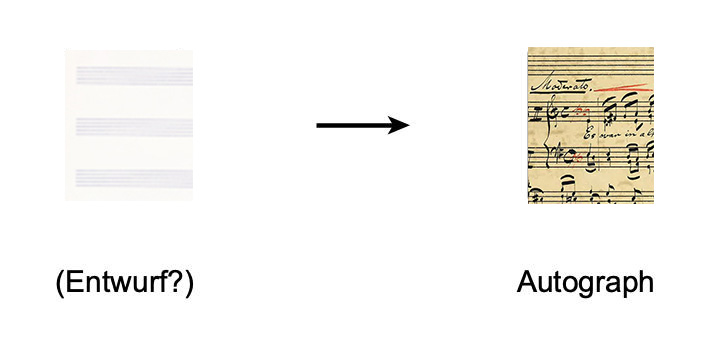Lacrimä Christi WoO VI/5
for male voice choir
-
Lacrimä Christi
Text: Rudolf Baumbach
- –
- –
- –
1.
| Reger-Werkausgabe | Bd. II/10: Werke für Männer-, Frauen- und Kinderchor, S. [4]–7. |
| Herausgeber | Christopher Grafschmidt und Claudia Seidl. Unter Mitarbeit von Knud Breyer und Stefan König. |
| Verlag | Carus-Verlag, Stuttgart; Verlagsnummer: CV 52.817. |
| Erscheinungsdatum | Oktober 2024. |
| Notensatz | Carus-Verlag, Stuttgart. |
| Copyright | 2024 by Carus-Verlag, Stuttgart and Max-Reger-Institut, Karlsruhe – CV 52.817. Vervielfältigungen jeglicher Art sind gesetzlich verboten. / Any unauthorized reproduction is prohibited by law. Alle Rechte vorbehalten. / All rights reserved. |
| ISMN | 979-0-007-31440-8. |
| ISBN | 978-3-89948-464-9. |
Lacrimä Christi
Rudolf Baumbach: Lacrimae Christi, in:
id.: Spielmannslieder, A. G. Liebeskind, Leipzig
unknown
Used for comparison purposes in RWA: Rudolf Baumbach: Lacrimae Christi., in:
id.: Spielmannslieder, 2nd edition, A. G. Liebeskind, Leipzig
Copy shown in RWA: unknown
Note: Es gab bereits einige Vertonungen des Gedichts, auch für Männerchor (Gottfried Angerer, Ferdinand Langer, Hans Michael Schletterer, Max von Weinzierl). Möglicherweise hatte der Weidener Liederkranz eine davon in seinem Repertoire.
1. Composition and Publication
After returning from Wiesbaden to his parents’ home in Weiden in June 1898, Reger’s former teacher Adalbert Lindner took the opportunity of asking him “to write something for our men’s choral society (the Liederkranz)”.1 The prospect of a performance might well have persuaded Reger to abandon his initial reservations about this genre (see Reger and his works for men’s, women’s and children’s choir), “because he brought me the finished score of a piece for men’s choir not long afterwards”, Lindner recalled.2 Reger was evidently planning a whole cycle, because he designated Lacrimä Christi (“The tears of Christ”), a setting of a poem by Rudolf Baumbach, his op. 21 no. 1.
Reger dated his manuscript 20 August 1890, which is inexplicable and can only be a slip of the pen, given that its opus number (one that he ultimately assigned to another work) means only 1898 comes into question as the year of its composition.3 When he left Weiden at the end of August 1901, Reger gave the manuscript to the man who had asked for it, after adding the remark: “An unsuccessful men’s chorus”.
In Lindner’s opinion, Lacrimä Christi “above all succeeded in rendering excellently the archaising character of the poem […] through the use of the old Church modes […]. The subtly humorous character of the text was also conveyed excellently thanks to the extraordinarily vivid, lively way in which the individual voices were conceived. But the composer undoubtedly offered too much of a good thing in certain respects. Above all, he could have given the singers more rests, and not taken the organ as his ideal, with its endless breath.”4
Lindner says only that Reger “ruled out” having this choral piece printed,5 and we may also assume that it was also never performed. He must have decided relatively early on about withholding it from publication, because he ultimately used its opus number for his Hymne an den Gesang (“Hymn to song”) for male voice choir and orchestra, which he composed at the same time.6
2.
Translation by Chris Walton.
1. Reception
At present, there are no records of performances in Reger's time.
1. Stemma

2. Quellenbewertung
Der Edition liegt als Leitquelle das Autograph zugrunde.
3. Sources
- Autograph
Object reference
Max Reger: Lacrimä Christi WoO VI/5, in: Reger-Werkausgabe, www.reger-werkausgabe.de/mri_work_00979.html, version 4.0, 18th December 2025.
Information
This is an object entry from the RWA encyclopaedia. Links and references to other objects within the encyclopaedia are currently not all active. These will be successively activated.